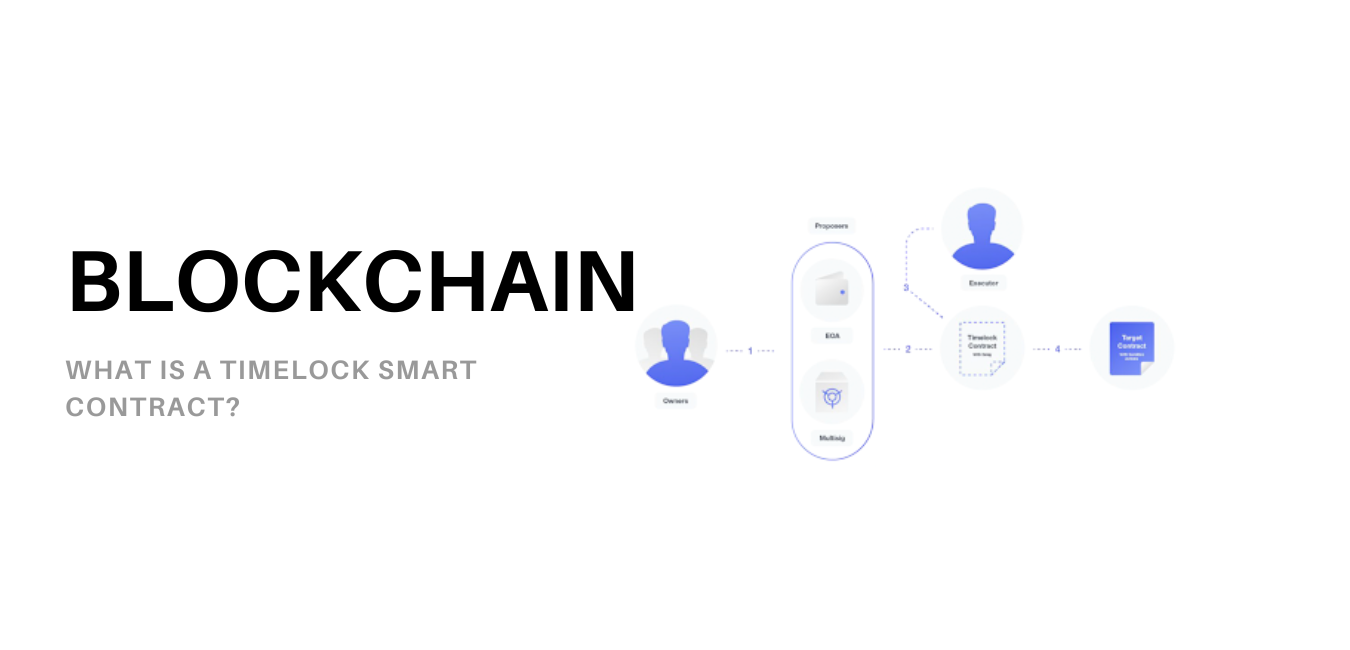Introduction
A timelock smart contract is a type of digital contract that allows for the release of funds or other assets at a specific future date or time. Timelock smart contracts are used to create escrow agreements, deferred payments, and other types of delayed transactions.
How Do Timelock Smart Contracts Work?
A timelock smart contract contains a set of rules and conditions that specify when and how the contract can be executed. When the contract is created, the parties involved agree to the terms of the timelock. This can include specifying a certain date or time when the contract will be executed, or setting a condition that must be met before the contract can be executed
Once we create the timelock contract, it is stored on a blockchain. This ensures that the contract cannot be altered or tampered with. When the specified time or conditions are met, the contract is automatically executed and the assets are transferred accordingly.
Why Use a Timelock Smart Contract?
Timelock smart contracts can be used in a variety of situations where it is beneficial to delay the execution of a transaction. For example, a timelock smart contract can be used to create an escrow agreement. In this type of agreement, the funds are not released until both parties have fulfilled their obligations. This can help to prevent fraud or disputes.
Another use case for timelock smart contracts is for deferred payments. This can be helpful if you are selling a product or service and need to receive payment upfront, but do not want to deliver the product or service until a later date. By using a timelock smart contract, you can ensure that you will receive payment when you are ready to deliver the product or service.
What Are the Benefits of Timelock Smart Contracts?
Timelock smart contracts offer a number of benefits, including:
Security
Timelock smart contracts are stored on a blockchain, which makes them tamper-proof. This ensures that the terms of the contract cannot be changed after it is created.
Trustless
Timelock smart contracts do not require trust between the parties involved. This is because the contract is automatically executed when the specified time or conditions are met.
Efficiency
Timelock smart contracts can help to streamline transactions and reduce the need for manual processing.
Cost-Effective
Timelock smart contracts can help to save on costs associated with traditional contracts, such as legal fees.
What Are the Risks Associated With Timelock Smart Contracts?
There are a few risks to be aware of when using timelock smart contracts, including:
- Loss of Control: Once a timelock smart contract is created, the parties involved lose control over the contract. This means that the contract cannot be altered or cancelled.
- Unforeseen circumstances: There is always the possibility that unforeseen circumstances could prevent the execution of a timelock smart contract. For example, if the specified time period expires before the conditions of the contract are met, the contract will not be executed.
- Hacking: Although blockchain technology is secure, there is always the potential for a hacker to gain access to the contract and execute it prematurely.
How to Create a Timelock Smart Contract?
If you want to create a timelock smart contract, there are a few things you need to do:
- Choose a blockchain platform: First, you need to choose a blockchain platform that supports the creation of timelock smart contracts. Some popular choices include Ethereum, EOS, and Tezos.
- Select a programming language: Next, you need to select a programming language that you will use to write the code for your timelock smart contract. Some popular choices include Solidity, Vyper, and Michelson.
- Write the code: Once you have chosen a platform and programming language, you can start writing the code for your timelock smart contract. The code will specify the terms of the contract, including the time period or conditions that must be met before the contract can be executed.
- Compile the code: Once you have finished writing the code, you need to compile it. This will convert the code into a format that can be read by the blockchain.
- Deploy the contract: Finally, you need to deploy the contract to the blockchain. This will make the contract accessible to all parties involved.
Once the contract is deployed, it cannot be altered or cancelled. This means that it is important to carefully consider the terms of the contract before deploying it.
One rule of thumb is to always use a Test-Driven Development approach when writing any smart contract to ensure that at every single step of the way, your contract is behaving as expected.
Here is an example of a timelock smart contract that will release funds 24 hours after the contract is deployed:
// SPDX-License-Identifier: MIT
pragma solidity >=0.5.0 <0.9.0;
contract TestTimelock {
address payable public beneficiary;
uint256 public releaseTime;
constructor(address payable _beneficiary, uint256 _releaseTime) {
beneficiary = _beneficiary;
releaseTime = _releaseTime;
}
function release() public payable {
require(block.timestamp >= releaseTime, "Not passed yet");
beneficiary.transfer(address(this).balance);
}
}I wrote another blog post that explains step-by-step How To Write A Timelock Smart Contract With Solidity, Web3.js, Truffle And Deploy on Goerli. Read this blog post and get your hands dirty.
Summary
In this blog post, we learnt that a timelock is a smart contract that allows you to lock up your tokens or Ether for a certain period of time. To ensure that your tokens are not traded or used until a certain date, or to prevent someone from taking your tokens before a certain date, timelock contracts are the way to go. They are used for a variety of purposes, and there are a few different ways to implement them. There are benefits and risks associated with deploying timelock smart contracts that you should always consider. Finally, we detailed a few steps someone looking to write timelock a smart contract should take.
I hope this was helpful. Happy coding!




